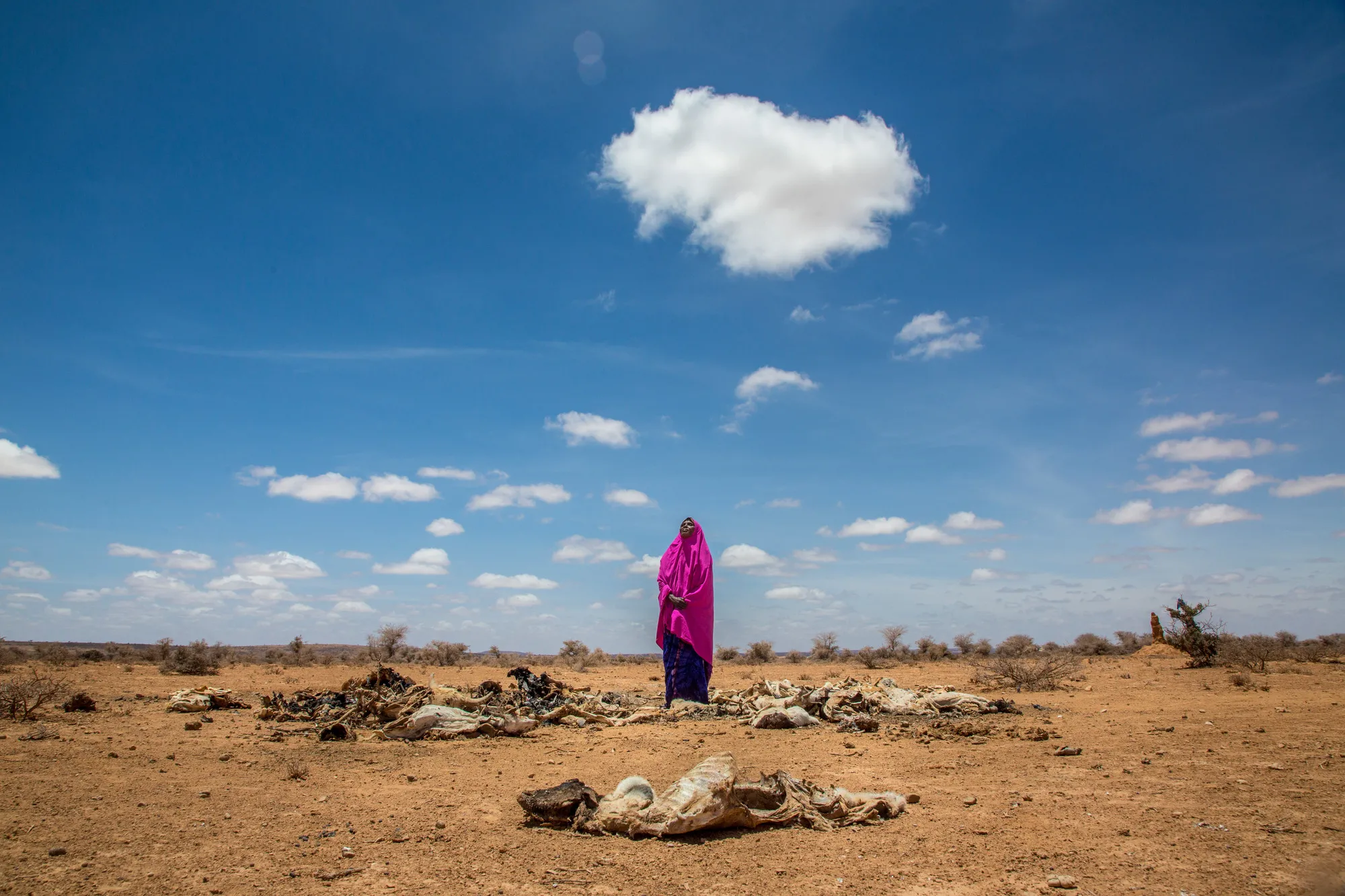At least 36.1 million people across the Horn of Africa are going hungry as Ethiopia, Kenya, and Somalia experience the worst drought in 40 years. With factors across the three countries ranging from four failed rain seasons and a potential fifth, rising costs of living, high inflation, climatic shocks, the Ukraine conflict that has seen wheat and fertilizer shortages, and insecurity, indicators point to the situation worsening.
In Ethiopia, according to UNOCHA, 24.1 million people are currently affected by below-average rainfall as a result of the climate crisis, this is a drought of proportions unseen in recent history. Inaccessibility of food and poor access to water is causing a rise not only in malnutrition amongst children but also across entire communities. Millions of cattle and livestock have already died as pasture and water points dry up. With the Intergovernmental Authority on Development (IGAD) forecast indicating an even drier than average October to December, when the rains would be expected, the situation will surely worsen.
Benoit Munsch, CARE International’s Managing Director for the Horn of Africa said, “As the food security situation worsens in Ethiopia, we are particularly concerned about the impact this is having on women and girls. Even though CARE has intervened early with food distributions for some affected communities, as well as through agriculture, cash transfers, health and nutrition, and WASH interventions, the unmet need remains staggering. This humanitarian crisis is the challenge of a generation. More funding and support is required to provide life-saving assistance to the hard-hit communities affected by the drought and to help them rebuild more resilient and sustainable livelihoods.”
In Kenya, almost 1 Million children under the age of five and 115,725 pregnant and lactating women are acutely malnourished. These are part of the 4.2 million Kenyans who are facing a severe drought and acute food insecurity. The Government of Kenya declared the drought a national disaster in September 2021. As the cost of living skyrockets and the country continues to feel the impact of the Ukraine conflict, it is expected that more people will continue to slip into hunger and hence the need for enhanced humanitarian response.
Mwende Kusewa, CARE International Kenya interim Country Director said, “While government subsidies on fuel and corn flour are welcome, they offer a very short-lived relief. Unfortunately, as the cost-of-living increases and with a projection that the short rains will likely be below average, we anticipate a grim situation in the coming months. Already it’s reported that in some of these areas, project participants are starting to prefer direct food distribution interventions rather than cash transfers because the high cost of food means that they will increasingly buy fewer food rations with the cash transferred to them.”
On 5th September 2022, humanitarian organizations sounded the alarm that parts of the Bay area in Somalia would slip into famine in October 2022 as the country faces it 5th Failed rainfall season. Somalia has been experiencing the worst drought in 40 years with 7.8 million people experiencing acute food insecurity with the U.N. reporting that, between January to June 2022, at least 200 children have already died as a result. Access to water is becoming increasingly challenging as most water points have dried up and prices have spiked. This is forcing women and girls to travel long distances in search of this precious commodity exposing them to GBV.
We are witnessing massive displacement of communities, with record estimates indicating at least 1 million people have moved from their homes in search of food and water with others even crossing borders. As herds of livestock have been annihilated due to a lack of pasture and water, the livelihoods of millions have been affected causing them to fall further into poverty.
Hali, a 70-year-old mother of 10 children says, “My whole life I was a pastoralist. Due to this prolonged drought in our village, my herd was decimated. I used to have 150 goats and 30 camels, now I am only left with 10 weak goats. I fled the drought and relocated to another place to raise my family.”
Somalia depends on wheat and fertilizer from Ukraine. As the conflict protracts beyond its six-month mark, prices of fertilizer, fuel, and wheat have soared affecting the accessibility of these to many in Somalia.
Iman Abdullahi, CARE International Somalia Country Director said, “We are currently in 11 regions in Somalia offering life-saving rapid response support to affected communities. We are supporting affected communities with Unconditional cash transfers, clean drinking water, health, and nutrition support for children under five years, and psychosocial support for women and girls affected by GBV. Immediate and urgent action is required to scale up our response to save the affected even as the situation worsens.”
Across the Horn of Africa region, CARE International is tirelessly engaged to support the communities that we work alongside. Kate Maina-Vorley, CARE East and Central Africa Regional Director said, “We have worked in the region for many decades, and it will be unfortunate to see some of the work that we have done, especially in support of women and girls being eroded.
For example, in Somalia, girls are dropping out of school to support their families in the search of food. We are weary that practices such as early marriage and Female Genital Mutilation may resurge. With the rising hunger and malnutrition levels, the rise of disease could worsen the situation. At the same time, we are very aware of the situation of neighboring countries, such as Sudan and South Sudan which are also experiencing an increase in food insecurity. In partnership with other humanitarian organizations need to act swiftly to upscale our response to stem this worsening disaster. we call on donors to increase funding to support the scale-up of the ongoing response”
For more information please contact:
Anisa Husain
CARE Press Officer
Anisa.Husain@care.org

